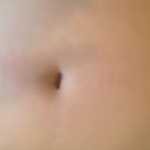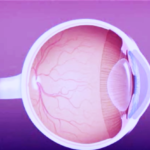When you have a bump forming on or around the earlobe, it may be a cyst, though pimples can present in a similar manner. Earlobe cysts appear like pimples, however, they aren’t same thing. Earlobe cysts may also be referred to as epidermoid cysts, they occur due to improper skin cells shedding. Instead of the cells shedding, they tend to move deeper into tissue of the skin where they begin to multiply. Eventually the cells create what is known as the “walls” of the cyst and begin producing keratin (a fluid) that fills the cyst. Some cysts may not need treatment, but if a cyst is causing pain or it doesn’t seem to go away, it is important you seek medical help.
Symptoms of an Earlobe Cyst
So, how do you identify an earlobe cyst? To help determine whether it is an earlobe cyst or just another pimple, you need to check on its appearance and feel. An earlobe cyst consists of a saclike lump that forms from dead skin cells. It looks like a small, smooth bump located under the skin and resembles a blemish.
Earlobe cysts may vary in color usually assuming the color of the skin pigment and sometimes appearing red. The size of an earlobe is that of a pea – usually not bigger than that. It’s important you watch the bumps to see if they are changing in size. The cysts are usually benign, they don’t normally cause serious health problems but they can be a cosmetic issue. When you have the cyst, it can feel uncomfortable, especially when you wear headphones because they rub against the lump.
Earlobe cysts may be found in different locations, for example, they may form inside the ear, in the ear canal, behind the ear, or on the scalp. When a cyst breaks open or raptures, it leaks a fluid that is known as keratin. The fluid has the texture of toothpaste.
Causes of Earlobe Cysts
Earlobe cysts occur when cells of the skin (epidemic cells) that ought to have been shed away, move deeper into the skin and begin multiplying. The cells that have gone deeper into the skin form the walls of cysts before they start secreting keratin to fill the cyst. Sometimes, cysts may be caused by oil glands or damaged hair follicles. Some families have a history of having cysts. At other times, earlobe cysts may form for no apparent reason. Many people will develop earlobe cysts at some point in their life, but these lumps aren’t a cause for concern.
Who May Develop These Cysts
There are things that may put an individual at risk of developing an earlobe cyst. You may have the cyst if:
- You have a genetic disorder or rare syndrome
- You have skin injuries likely to make the cells react in an unusual way by burying themselves into the skin instead of shedding away
- You have passed puberty stage, rarely do cysts develop in babies and children
- You have a history of developing acne. People who regularly develop acne issues are more likely to have lumps of fluids.
Diagnosis
If you develop a bump around the scalp or earlobe, in most cases, it may be a benign cyst that disappears without needing treatment. At times, you may have the cyst getting bigger, though it still goes away on its own. That said, you need to consult with a doctor is you find that you have a cyst that gets large, affects the heating, or causes pain.
Another thing you may want to watch is the color, a change in hue may indicate the cyst is infected. When doing a diagnosis, a doctor will ask about your medical history to determine if there may be other possible causes of a bump in the ear. The doctor examines the cyst to once again see if it surely is a cyst or another thing like a pimple. Cysts that are infected need to be removed through a simple incision done by a doctor.
Earlobe Cyst- Treatment (Removal)
Treating a cyst mainly depends on its severity. A cyst that is not causing any problem may be left alone, it will heal and disappear on its own without any treatment. However, a cyst that is annoying or making you uncomfortable may be removed. Similarly, a cyst that is causing significant pain may also be taken out.
Sometimes, the cyst may enlarge and grow to a size that is uncomfortable meaning you may want to have it removed. It is important you make an appointment with a physician if a cyst has been causing prolonged pain or if it has contributed to hearing loss. Seeing a doctor will ensure that the cyst does not cause an infection in the earlobe. A doctor removes the cyst by doing an operation or surgery under a local anesthetic. The cyst is cut, pulled out, and the skin is stitched up. A cyst, after removing it, may grow back. If that happens, you can get to your doctor for it to be removed again.
There are at-home remedies you can use to treat a cyst. For example, warm compresses can help shrink the earlobe cyst. Other things like turmeric, tea tree oil, and clay mask are also helpful.
Conclusion
Mostly earlobe cysts are benign and won’t present a health risk, however, they can make you uncomfortable. Sometimes, they can be painful and may bring about slight hearing loss. If the cyst does not go away, you can see a doctor to have it surgically removed.

